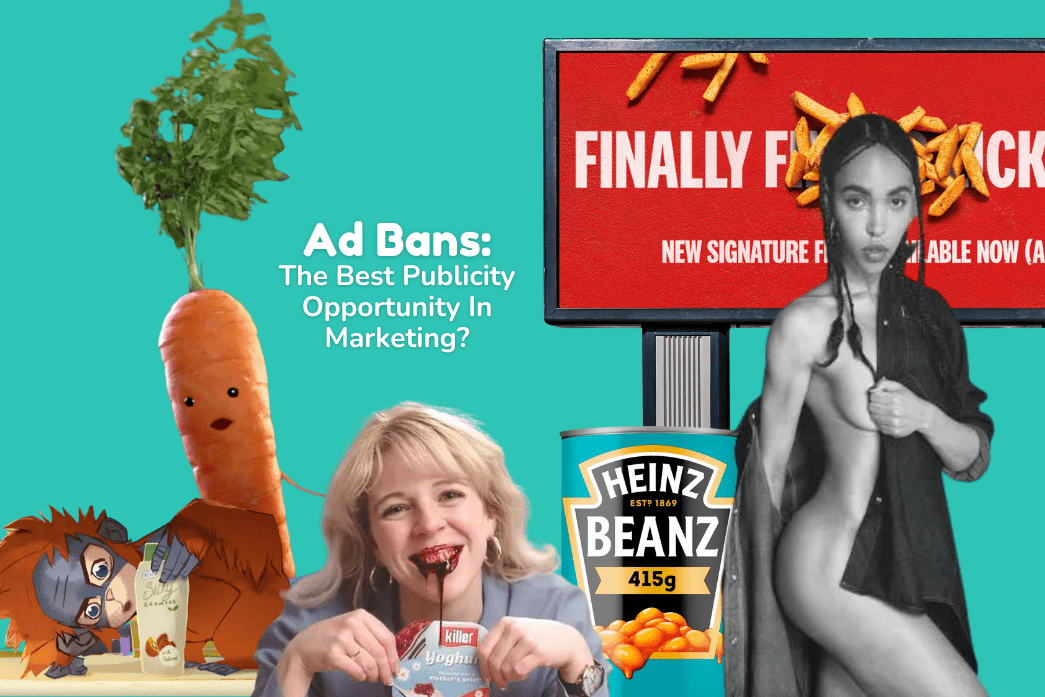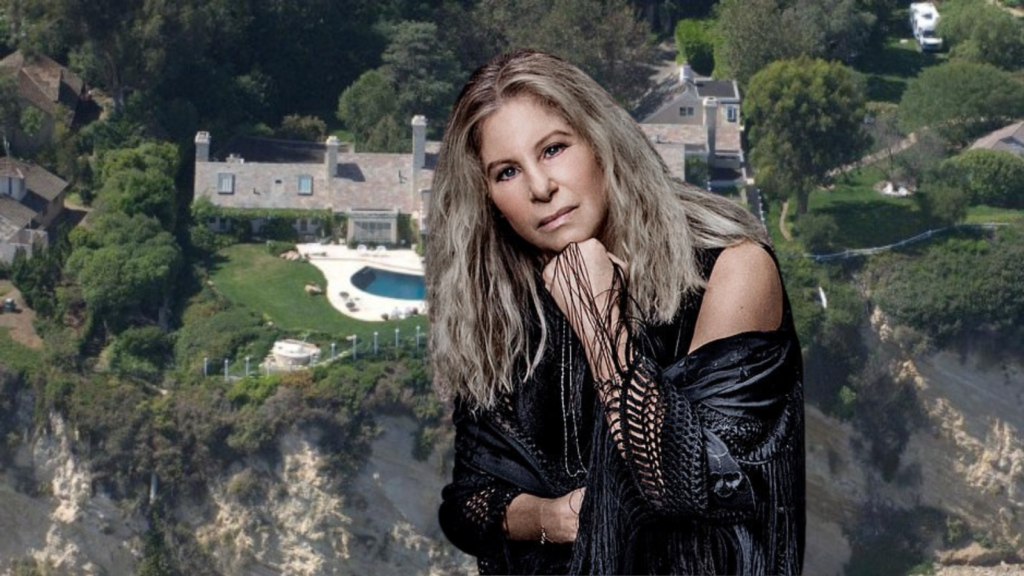
The ASA (Advertising Standard’s Agency) banned a whopping 52% more ads in 2022 than the year before, and they’re still banning away like never before.
While most businesses consider an ad ban embarrassing, many still get a decent ROI (return on investment) from the banned campaign. Simply because it got so much media attention. Of course, there’s a fine line between ‘cheeky’ and ‘offensive’.
Let’s learn how to create ads that get all the good attention and none of the bad stuff.
When controversial ads work wonders
Feat. Calvin Klein’s FKA Twigs Ad
Calvin Klein’s ‘Calvins or Nothing’ ad campaign featuring singer FKA Twigs got major media attention in early 2024. Here’s why.
- The ASA’s reasoning for the ban – that the ad depicted the star as ‘a stereotypical sexual object’ – was offensive to many women.
- FKA Twigs herself commented on the ban in a viral Instagram post: ‘i see a beautiful strong woman of colour whose incredible body has overcome more pain than you can imagine.’
- People noticed that a similar campaign from Calvin Klein featuring The Bear actor Jeremy Allen White was not penalised.
- The ban was ultimately revoked, a rare happening that gave Calvin Klein and those involved in the ad a lot of cred.
Even if the ban had not been revoked, the brand awareness Calvin Klein gained was immense.
And this wasn’t a one-off.
3 times an ad ban was good news for a brand
- Iceland: The supermarket chain’s 2018 Christmas ad was banned for being too ‘political’. Its crime? Featuring a cartoon orangutan affected by deforestation thanks to palm oil. Oh, and daring to link its name with Greenpeace. Sadly for the ASA, viewers loved the ad and sneakily spread it across the internet.
- KFC: Continuing its run of self-deprecating ad campaigns, KFC launched billboard ads announcing their new signature fries with the slogan ‘finally f___ing good*’. The asterisk led you to the adjective ‘finger-licking’. Of course. The ASA found it violated its swearing policy, but the banned ad stormed social media and fast food fans rushed to sample the new fries.
- Viva!: This vegan charity launched an ad in which a woman eats a (very Müller-like) umbilical cord-flavoured yoghurt. It was banned for containing ‘bloody and gory’ imagery. Naturally, the video got a lot of views anyhow. Despite criticism, it succeeded with two key audiences: hardcore vegans loved the ad and donated; potential vegans could never eat a Müller yoghurt the same way again.
The Streisand effect (or psychological reactance)
The Streisand effect: when attempting to suppress or hide something actually brings additional publicity or attention.

The phenomenon is named after actress Barbra Streisand. In 2003, she tried to stop photos of her Malibu home from reaching the public eye and won the images far more attention than they might have received otherwise.
Because when you try to hide something, it triggers psychological reactance. Most people have a motivational state aimed at restoring freedom when it is perceived to be threatened or eliminated. They may feel compelled to seek out a banned ad even more fervently, driven by the desire to assert their autonomy and resist the perceived attempt at control.
We don’t promote trying to get your ads banned, but it’s important for all marketers to be aware of the behavioural economics at play in the buyer’s journey. We wrote a whole article about that here.
Read ‘9 Eye-Opening Examples of Behavioural Economics in Marketing’
When controversial ads destroy your brand reputation
Feat. H&M’s schoolwear ad

We’re not going to include a visual of H&M’s ad featuring two young schoolgirls with the words ‘Make those heads turn in H&M’s Back to School fashion’. It was rightfully cancelled for sexualising children and the brand has only received negative attention in light of it.
There are clear lines when it comes to controversial content. Ads that objectify children on screen or attempt to sell unhealthy products to underage viewers will be swiftly brought down. And don’t expect your sales to go up!
3 times an ad ban was bad news for a brand
- Aldi: The European supermarket’s Christmas mascot Kevin the Carrot was a hit until he was accused of promoting alcohol to children. The friendly carrot had got enough publicity without the ban. Sadly it just served to keep him off the TV and make Aldi look bad.
- Heinz: We all like making big claims in our paid advertising. But Heinz’s suggestion that their baked beans contain as much protein and fibre as a protein shake was deemed ‘misleading’ and the ad was pulled. It wasn’t a big enough story to make the headlines, so the campaign was ultimately a waste of money.
- Natural Cycles: Ads for the alternative birth control app were banned for claiming the product was ‘99% effective’ and ‘clinically tested’. Following the ban, many women came forward to share that they got pregnant while using Natural Cycles and felt misled. All publicity is good publicity? Not for Natural Cycles, that’s for sure.
Contraception app Natural Cycles’ Facebook ad banned for being misleading https://t.co/YjJYKMRxde pic.twitter.com/QuBB5Mu2qy
— RUGGED (@RuggedUK) August 29, 2018
What should you do with this information?!
We love to create ads that are big and bold and thought-provoking. But when you strive for attention, you often end up with the bad kind.
The key to good content – controversial or not – is authenticity. The FKA Twigs ad felt authentic to her, to the brand, and even to the (not featured) product. KFC has always been irreverent. And Iceland’s ‘political’ ad worked because they actually are one of the only British supermarkets with no palm oil in their products.
Sometimes you’ve got to let carrots be carrots and beans be beans.
The rules of controversial content:
- Never supply misleading information.
- Treat your models with respect and don’t sexualise your subjects.
- Share messages that you live out in every aspect of your business.
Ad rejections in paid media
Digital advertising is another story. When you launch an ad campaign on social media or Google, the creatives and copy will be reviewed against strict policies before it has a chance to go live.
These strict rules protect you from destroying your brand reputation. Still, many companies have wasted a lot of money on campaigns that have never launched. Check each platform’s policy before you commit to a concept!
When you need a paid advertising partner
You might struggle to get a good ROI on your PPC (pay-per-click) campaigns for many reasons. Uninspiring visuals. Inauthentic copy. Or ban-worthy content that just doesn’t align with your brand.
Sometimes your assets are on point but your targeting’s off. It could also be that you’re putting budget into the wrong channels.
Whatever it is, our PPC experts can find the solution. Get in touch today and let’s have a chat.



